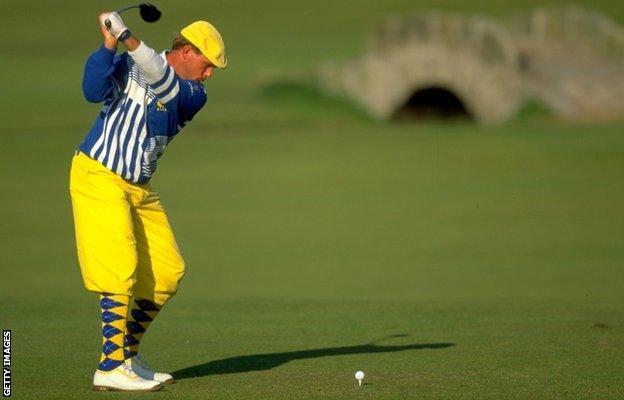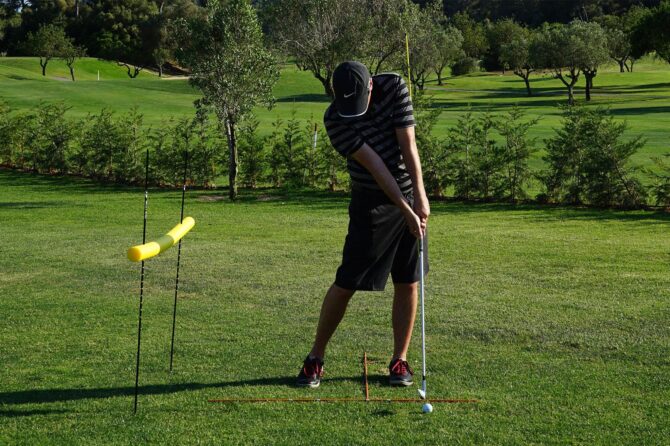Payne Stewart’s Golf Lessons: Strategy and Resilience
The legacy of Payne Stewart goes far beyond his achievements on the golf course; it embodies a strategic mindset essential for athletes aiming to enhance their performance. This exploration delves into the nuances of Stewart’s methodology regarding course management, shot selection, and mental strength. By analyzing the techniques Stewart employed to overcome obstacles and refine his game through intentional practice and strategic decisions, golfers can gain invaluable insights that improve both their technical skills and mental fortitude. As the sport evolves, grasping the principles that guided a golfer of Stewart’s caliber can equip modern players with the necessary tools for success. This analysis seeks to articulate these strategic insights, providing golfers with a framework to navigate the complexities of the game while fostering a deeper gratitude for the art of golf.
Strategic Course Management and Decision Making in Golf
At the heart of Payne Stewart’s golfing ideology lies effective course management, which underscores the significance of making informed decisions based on the course layout and individual capabilities. Stewart excelled at assessing each hole, considering factors such as risk versus reward, terrain, and weather conditions. As a two-time U.S. Open champion, he recognized his strengths and weaknesses in relation to the course, making calculated choices that maximized his scoring potential. His approach to course management was characterized by techniques including:
- Analyze the Terrain: Stewart would strategically position himself to avoid hazards while approaching greens, ensuring that his stance and swing were optimal for each situation.
- Play to Your Strengths: By acknowledging his own abilities, he selected clubs and shot types that maximized his chances of success.
- Distance Control: He mastered distance gauging, frequently opting for longer clubs to increase margin for error when facing challenging pin placements.
Central to Stewart’s approach was his ability to prioritize shots that aligned with his game plan. His decision-making process typically included:
- Shot Selection: Opting for clubs and shot types that suited the conditions and his confidence level.
- Patience: Knowing when to adopt a defensive strategy, particularly on challenging holes.
- Visualization: Mentally rehearsing the shot before execution to enhance focus and clarity.
Effective course management also encompasses the importance of thorough course familiarity through thorough readiness. This involves studying the layout and unique characteristics of the course, as well as understanding how different conditions—such as wind, humidity, and temperature—alter playability. Such knowledge fosters informed decision-making, enabling players to choose the best approach for each hole.
Moreover, effective course management is pivotal in minimizing mistakes and maximizing performance. Golfers must adopt a holistic approach that encompasses not only their technical skills but also keen strategic thinking. Key strategies include:
- Assessing Risk: Familiarize yourself with potential dangers around the course to navigate safely.
- Choosing Optimal Angles: Positioning yourself correctly for subsequent shots can significantly reduce the difficulty of the next stroke.
- Prioritizing Short Game: Focus on placing the ball in favorable positions that allow for easier chip or putt opportunities.
To illustrate the tactical decisions made during a typical round, consider the following table summarizing preferred strategies for different hole types:
| Hole Type | Recommended Strategy | Key Considerations |
|---|---|---|
| Par 3 | Aim for the center of the green | Minimize the risk of three-putts |
| Par 4 | Lay up if hazards are present | Focus on a short approach |
| Par 5 | Go for the green in two only if conditions are favorable | Assess wind and hazards |
By adopting these decision-making frameworks and emphasizing strategic play, golfers can cultivate a mindset similar to Stewart’s. This approach not only enhances performance but also enriches the overall experience of the game.
Shot Selection Techniques for Optimal Performance
Effective shot selection is crucial for achieving peak performance on the golf course. Understanding the course layout and potential hazards plays a vital role in determining the best approach for each shot. Before diving into specifics, consider factors such as wind direction, terrain slope, and green firmness. Each of these elements can significantly impact ball trajectory and distance, as well as the ability to execute a successful shot.
Incorporating a strategic framework for evaluating shot options can greatly enhance decision-making. When faced with a choice, ask yourself these critical questions:
- What is the distance to my target?
- What are the weather conditions and how will they affect my shot?
- Am I clear of any obstacles or hazards?
- Which club will most likely yield the optimal trajectory for this situation?
To facilitate better shot execution, golfers can benefit from maintaining a complete shot selection chart, detailing scenarios that dictate specific club choices. Below is an example of how such a chart may look:
| Distance (Yards) | Recommended Club | Swing Type |
|---|---|---|
| 100 | Pitching Wedge | Soft Approach |
| 150 | 7-iron | Controlled Swing |
| 200 | 3-wood | Power Drive |
By consistently applying these approaches and refining one’s ability to read the course, golfers can develop greater confidence in their shot selection, ultimately paving the way for improved performance on the greens.
Mental Resilience and Focus: The Psychological Edge
Payne Stewart exemplified the vital connection between mental resilience and focused performance on the golf course. His ability to maintain composure under pressure was not solely a product of talent but also stemmed from a well-honed psychological framework. Key elements that contributed to his success include:
- Visualization Techniques: Stewart frequently used imagery to mentally rehearse shots and envision success before execution, which can create a mental framework and help reduce anxiety.
- Positive Self-Talk: Developing a habit of affirming one’s abilities can counter negative thoughts and bolster performance.
- Mindfulness Practices: Engaging in mindfulness can help stay present, reducing anxiety and improving focus throughout a round.
Moreover, building mental resilience involves cultivating a competitive mindset, recognizing that setbacks are opportunities for learning. Resilient players can skillfully shift their focus, ensuring that previous mistakes do not dictate future performance. To enhance focus and resilience, golfers can adopt several strategies inspired by Stewart’s approach. These include:
- Developing a pre-shot routine that instills a sense of calm and confidence.
- Practicing breathing techniques to alleviate anxiety.
- Leveraging positive self-talk to counter negative thoughts.
Creating a mental blueprint of the course can further aid in fostering clear focus. Consider the following parameters for effective readiness:
| Parameter | Description |
|---|---|
| Course Strategy | Analyze each hole for the best approach based on strengths. |
| Shot Selection | Choose shots based not just on risk, but also comfort level. |
| Mental Checkpoints | Implement regular self-assessments during play to gauge mental state. |
Incorporating these strategies allows golfers to construct a robust mental framework, echoing Stewart’s methodology. This alignment of strategy and mental readiness empowers athletes to perform with clarity and poise, enhancing overall performance. By cultivating these skills, golfers not only elevate their technical abilities but also gain a meaningful psychological edge that can lead to consistent success on the greens.
Adapting to Environmental Conditions and Course Layout
Payne Stewart mastered the art of adapting to challenging environmental conditions on the golf course. His ability to analyze winds and terrain set him apart, enabling him to formulate strategies that played to his strengths while mitigating potential hazards. By understanding how strong winds can affect ball trajectory, Stewart often adjusted his club selection and swing mechanics to ensure accuracy and distance. Observations on local weather patterns and their impact on course conditions allowed him to tailor his approach, enhancing his chances of success against the odds.
Moreover, mastery of a course’s layout is crucial for any golfer aiming to excel under varying circumstances. Stewart’s insights into course management highlighted the importance of recognizing key features such as bunkers, water hazards, and areas of dense rough. Such features dictate not only shot selection but also the overall strategy for navigating the course. By employing a meticulous approach to mapping out potential shots and anticipating challenges, he optimized his performance while minimizing mistakes. His careful planning demonstrates how understanding a course’s unique architecture can significantly influence a golfer’s success.
| Course Element | Strategic Adaptation |
|---|---|
| Wind Direction | Adjust club selection for better trajectory |
| Rough Density | Choose higher lofted clubs for recovery shots |
| Bunker Location | Plan approach shots to avoid traps |
| Water Hazards | Opt for conservative shot choices |
Through keen observation and innovative tactics, Stewart not only overcame environmental and course challenges but also paved the way for aspiring golfers to understand the vital link between strategy and adaptability. His legacy continues to inspire players to think critically about their game and approach each course with a fresh viewpoint, ensuring their ability to thrive regardless of the conditions.
Building an Enduring Practice Routine Inspired by Stewart’s Philosophy
Payne Stewart’s philosophy emphasizes the importance of a structured and intentional practice routine, one that hones technical skills while cultivating mental resilience. Integrating Stewart’s principles requires a holistic approach, encompassing various facets of golf training. To establish a sustainable practice routine, consider the following elements:
- Focus on Course Management: Regularly incorporate scenarios that mimic real-game pressure, allowing you to practice strategic decision-making.
- Develop a Pre-Shot Routine: Much like Stewart, implement a consistent pre-shot ritual that helps you center your focus and eliminate distractions.
- Mental Conditioning: Engage in visualizations and mindfulness techniques to enhance your confidence and composure during play.
In addition to these key elements, it is essential to track your progress through a systematic approach. Establish a practice log to reflect on performance, strategies used, and areas for advancement. An effective format may look like this:
| Date | Practice Focus | Performance Notes |
|---|---|---|
| March 1 | Short Game | Improved wedge accuracy; struggled with putting under pressure. |
| March 6 | Long Drives | Consistent distance achieved; need improvement in follow-through. |
Consistency is vital in your journey toward mastery. Follow Stewart’s example and set realistic benchmarks for improvement, celebrating small wins that contribute to overall growth in your game. Establish regular practice sessions and incorporate a variety of drills to keep your skills sharp. By aligning your routine with Stewart’s strategic insights, you can build a practice regimen that not only fosters technical ability but also reinforces mental toughness.
Payne Stewart’s illustrious career serves as a profound case study in the realms of strategic acumen, skill refinement, and mental resilience essential to achieving excellence in golf. Analyzing his gameplay reveals that his success was not merely a function of inherent talent but rather a comprehensive understanding of course management, precision in execution, and the psychological fortitude necessary to navigate the pressures of competition.
The enduring lessons gleaned from Stewart’s approach transcend the golf course, inviting players at all levels to cultivate a mindset of continuous improvement and strategic planning. As emerging golfers seek to elevate their own mastery, they would do well to reflect on the principles exemplified by Stewart, integrating his insights into their practice to forge a deeper connection with the game.
By embracing the teachings of Payne Stewart, golfers can unlock their potential, fostering an appreciation for the artistry and strategy inherent in the sport. Ultimately, the legacy of Payne Stewart is not just one of victory but of inspiration—encouraging current and future generations to pursue greatness through thoughtful preparation and unwavering resilience.

**meta Title:** Unlocking Golf Greatness: Payne Stewart’s Strategic Insights
**Meta Description:** Discover the strategic secrets of Payne Stewart that can elevate your golf mastery. Learn his course management techniques, shot selection tips, and mental resilience strategies.




